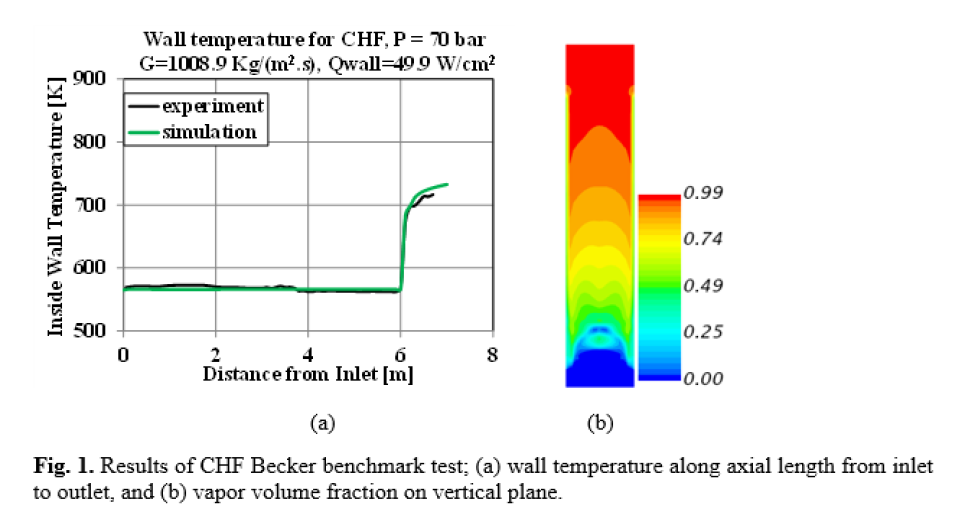
Simulations of boiling flow in a heated pipe for safety analyses of nuclear reactors
The Eulerian Multiphase (EMP) model in the STAR-CCM+ CFD code was validated through simulations of multiple Becker benchmark CHF tests performed under both DryOut (DO) and Departure from Nucleate Boiling (DNB) boiling conditions. Good agreement was obtained between the calculated wall temperatures and corresponding experimental data. The multi-flow regime model parameters presented, and the constitutive correlations developed for the calibration of the turbulence dispersion coefficient and vapor wall contact area fraction are valid for a wide range of mass, heat flux and system pressures. Further investigation is planned to improve the simulation results of post-DNB wall temperatures for PWR conditions.
This project focuses on the validation and enhancement of the Eulerian Multiphase (EMP) boiling flow model available in the STAR-CCM+ Computational Fluid Dynamics (CFD) code. The STAR-CCM+® EMP models will be enhanced to include the latest NEK-2P model extensions during this activity. The model extensions will be implemented in STAR-CCM+® as a set of user functions referred to as the Advanced Boiling Framework (ABF). It is important to note that the STAR-CCM+® EMP models are based on the two-phase models inherited from the predecessor CFD code STAR-CD, which were developed by ANL in collaboration with CD-adapco. This new development can be used as a supporting tool for safety analysis of Pressurized Water Reactor (PWR) and Boiling Water Reactors (BWR).
Simulations of boiling flow in a heated pipe were performed and results were compared with corresponding experimental data (Fig. 1). In our previous work, the two-phase CFD codes NEK-2P and STAR-CD codes were validated through comparison with Becker Critical Heat Flux (CHF) benchmark tests. In both codes, the extended boiling framework (EBF) was implemented. The EBF was developed for the fine-mesh, 3-dimensional simulation of the two-phase flow phenomena that occur in a Boiling Water Reactor (BWR) fuel assembly. These phenomena include coolant phase changes and multiple flow topologies that directly influence the reactor performance. The EBF boiling models, which describe the inter-phase mass, momentum, and energy transfer phenomena specific for various local flow topologies, allow the simulation of a wide spectrum of flow regimes expected in a BWR fuel assembly. Also, the same formulated model validated with 5x5 spacer grid for PWR conditions (not shown).